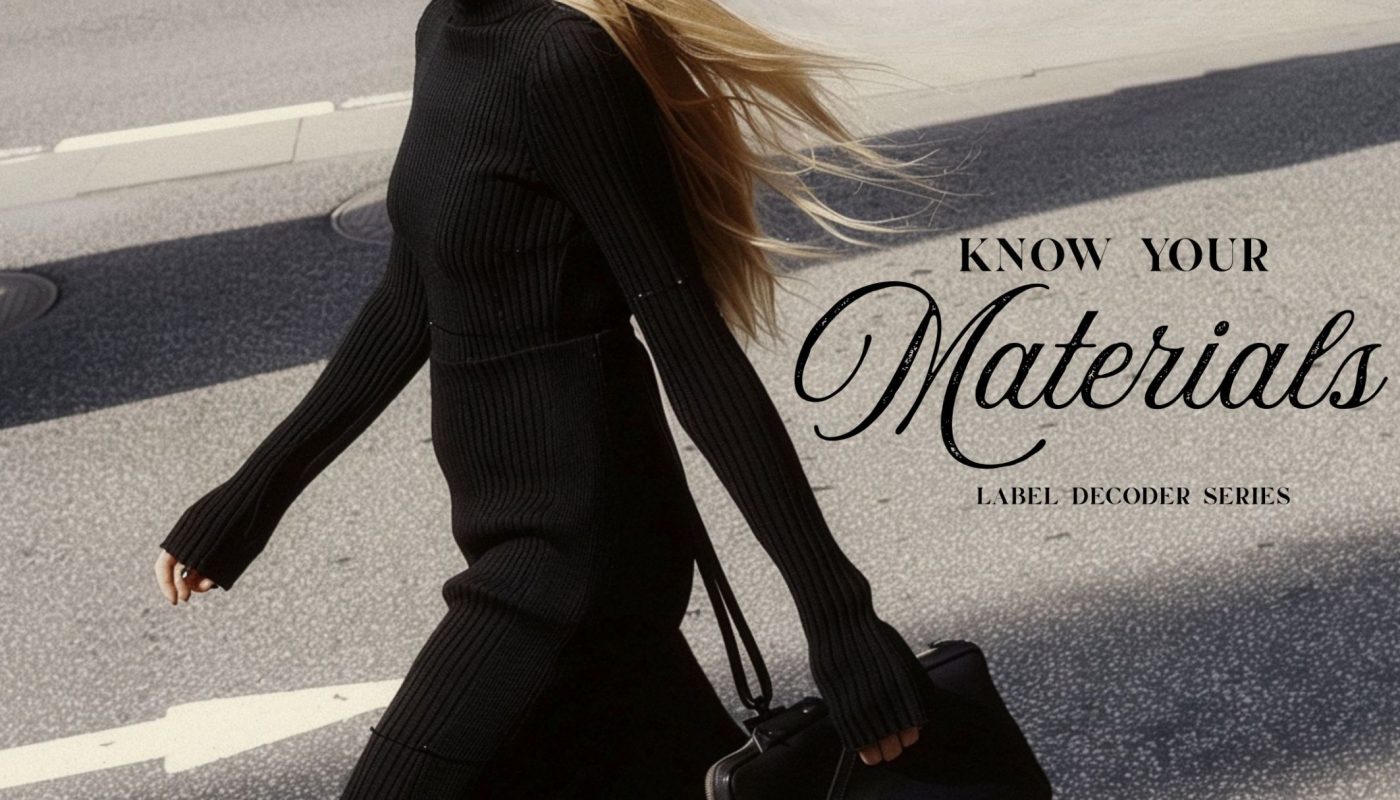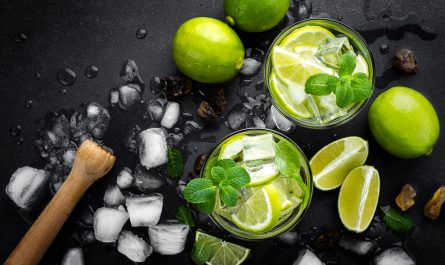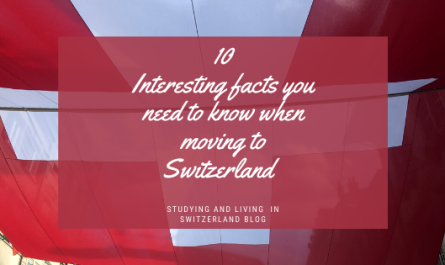You’ve seen them on clothing labels:
viscose, modal, rayon, bamboo viscose.
They sound natural —
but are they really better for the planet?
The truth is more complicated than it seems.
In this post, we break down what rayon actually is,
how these materials differ,
and what you should know before you buy.

What Is Rayon?
Rayon is an umbrella term for a group of semi-synthetic fibers made from regenerated cellulose. If you’ve seen viscose, modal, lyocell, or bamboo viscose on a label, they’re all different types of rayon—just made with slightly different raw materials or production methods.
Rayon is a semi-synthetic fiber made from regenerated cellulose. Cellulose is a natural polymer—meaning it’s made up of long, repeating chains of molecules—found in the cell walls of plants. It’s what gives structure to wood, cotton, and other plant fibers. In simple terms, it’s the tough, fibrous part of plants that can be turned into fabric.
Common rayon types include:

Though they differ slightly, all belong to the rayon family.
What Is Rayon Made From?
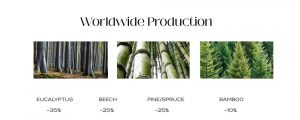
- Deforestation, including in endangered forests
- Biodiversity loss
- Opaque supply chains
How It’s Made
A simplified version of the production process:
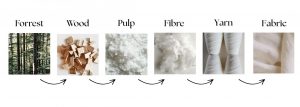
- Trees or bamboo are turned into wood chips
- Chips are pulped using chemicals like sodium hydroxide and carbon disulfide
- Liquid pulp is extruded into fibers
- Fibers are washed, dried, and spun into yarn
Unless made in a closed-loop system (like TENCEL™), this process can release pollutants into the environment and expose workers to toxic substances.
Rayon vs. Polyester
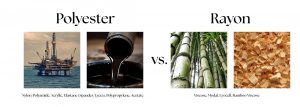
Rayon is often viewed as the more sustainable choice, especially when compared to polyester—a synthetic fiber made from crude oil. Polyester is known for shedding microplastics when washed, which end up in oceans and waterways, affecting marine life and possibly human health.
Rayon seems more eco-friendly because:
- Made from plant sources
- Breathable and soft
- Biodegradable (under the right conditions)
But there are issues:
- Chemically intensive production
- Less durable, prone to pilling
- Can contribute to deforestation if not responsibly sourced
Polyester is more durable and easier to recycle, but it’s derived from fossil fuels and doesn’t biodegrade. Rayon has more potential only when certified and produced responsibly.
Bottom Line
Rayon, modal, and lyocell are often marketed as “natural,” but their sustainability depends on how the fibers are sourced and processed.
Look for trusted certifications like GOTS, FSC®, Fairtrade, OEKO-TEX®, bluesign®, and TENCEL™ to ensure safer production, responsible forestry, and better protection for people and the planet.

Coming up next:
We’ll decode cotton labels—because “100% cotton” doesn’t always mean what you think.
We’ll also explore polyester in a future post—its link to microplastics, what recycled versions really solve, and why it’s so dominant in the fashion industry.
And yes, a deep dive into TENCEL™ is coming soon.
Your Turn:
Have you ever chosen clothing based on a label like “bamboo” or “modal”? What made you trust it? Drop your story or questions in the comments below.
*all visuals (exept logos: bluesign, oekotex, fsc, fairtrade, tencel and GOTS) are made by Midjourney
